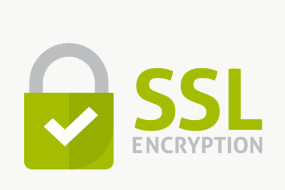
In today’s ever-evolving landscape of technology and data, ensuring the security of your server infrastructure is paramount. By implementing robust security measures and diligently hardening your servers, you can fortify your digital fortress against potential cyber threats. In this comprehensive guide, we will delve into the intricacies of server security hardening, its significance in safeguarding your valuable assets, and provide practical tips to optimize your server security posture.
Understanding Server Security Hardening: Building a Resilient Defense
Server security hardening refers to the process of proactively securing your servers by implementing a series of rigorous measures to reduce vulnerabilities and fortify their defenses. By systematically configuring and optimizing your server settings, you can minimize the risk of unauthorized access, data breaches, and potential exploits. Let us explore the key aspects of server security hardening and how they contribute to bolstering your overall security posture.
The Importance of Server Security Hardening
Effective server security hardening offers numerous benefits that enhance the integrity and resilience of your server infrastructure:
1. Mitigates Vulnerabilities: By identifying and addressing potential vulnerabilities, server security hardening significantly reduces the attack surface, making it harder for malicious actors to compromise your servers.
2. Protects Sensitive Data: Hardening measures, such as encryption and access controls, ensure the confidentiality and integrity of sensitive data stored on your servers, safeguarding it from unauthorized access or tampering.
3. Minimizes Service Disruptions: Server security hardening helps prevent service disruptions caused by malicious attacks or unauthorized access attempts. By implementing robust security measures, you can maintain the availability of critical services for your users.
4. Complies with Regulatory Standards: Adhering to industry regulations and compliance standards is crucial for businesses. Server security hardening assists in meeting these requirements by implementing necessary security controls and practices.
5. Enhances User Trust: By demonstrating a commitment to server security hardening, you instill confidence in your users, partners, and clients, strengthening your reputation and fostering trust.
Best Practices for Server Security Hardening
To optimize the security of your servers, consider implementing the following best practices for server security hardening:
1. Apply Regular Software Updates: Keeping your server software up to date is vital to address known vulnerabilities and ensure you benefit from the latest security patches.
2. Configure Secure Authentication: Implement strong and unique passwords or consider using multi-factor authentication (MFA) to enhance the security of user accounts and limit unauthorized access.
3. Restrict Unnecessary Services: Disable or remove any unnecessary services or applications running on your servers to minimize the attack surface and reduce potential vulnerabilities.
4. Implement Firewall Rules: Utilize robust firewall rules to control network traffic and restrict access to your server. Whitelist only essential services and IP addresses, preventing unauthorized access attempts.
5. Enforce Access Controls: Implement granular access controls to restrict user privileges and limit administrative access to authorized personnel. Regularly review and update user permissions based on the principle of least privilege (PoLP).
6. Encrypt Data in Transit and at Rest: Utilize encryption protocols, such as SSL/TLS, to secure data transmitted between servers and clients. Additionally, encrypt sensitive data stored on your servers to protect it from unauthorized access.
7. Implement Intrusion Detection Systems (IDS): Deploy IDS solutions to monitor network traffic and detect potential intrusions or suspicious activities. IDS can provide real-time alerts, enabling prompt responses to mitigate threats.
8. Regularly Back Up Data: Implement regular data backups to protect against data loss due to security incidents or system failures. Ensure backups are securely stored and regularly tested for reliability.
Conclusion
Server security hardening is a critical step in fortifying your digital infrastructure against the ever-present threat landscape. By implementing rigorous security measures and following best practices, you can significantly reduce vulnerabilities, protect sensitive data, and enhance the resilience of your servers. Stay proactive, regularly review and update your security configurations, and remain vigilant to ensure ongoing protection against emerging threats. By embracing server security hardening, you establish a robust foundation for a secure and reliable server environment.





